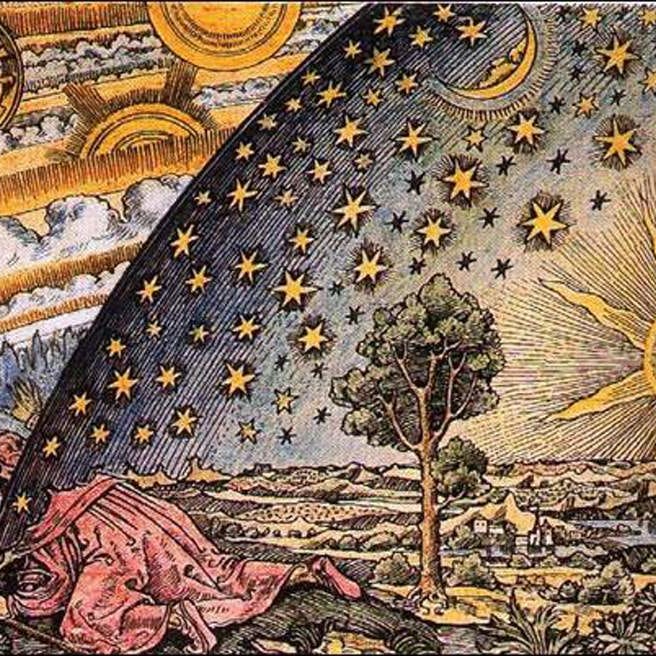The Shaping of a World Religion: From Jesuits, Freemasons & Anthropologists to MK Ultra & the Counter-Culture Movement PART IV
By Cynthia Chung
“In the inevitable course of human history the individual races will probably fade out and disappear, and the world will be filled to overflowing with a generalized race in which the dominating blood will be that of the race that today has the strongest claim, physically and intellectually, to take possession of all the resources of the land and sea. The resultant race will not have of the native American blood even this one three-hundredth part, because they are decadent as a result of conditions imposed by civilization. As diagrammed by the ethnologist of the far future the career of the Indian will appear as lenticular figure – beginning in nothing, ending in nothing – a figure of perhaps universal application by the historian of mundane things.”
- William Henry Holmes “Random Records of a Lifetime”, Chief of the Smithsonian Institute’s Bureau of American Ethnology (John Wesley Powell’s successor), head curator of anthropology at the U.S. National Museum, chairman of the Division of Anthropology of the U.S. National Museum, director of the Smithsonian American Art Museum.
[This is Part IV of ‘The Shaping of a World Religion’ series. Refer here for Part I, Part II, and Part III.]
In the previous installment, the role of Albert Gallatin was discussed in shaping what would become the “science” of anthropology. In 1842 Gallatin, created and became the first president of the American Ethnological Society, a sister organization to European ethnological societies, “which served as an adjunct to the Young Europe, Young Switzerland, Young Italy, Young Germany, Young England, and Young America projects of Britain’s Lord Palmerston [which were all proto-fascist movements].”[1]
Recall, Henry Rowe Schoolcraft was both a commercial and espionage teammate of Albert Gallatin, manager of John Jacob Astor’s affairs, and began to work under Gallatin’s auspices in the budding new field of anthropology.
Historian Anton Chaitkin writes in his “Treason in America”[2]:
“In August of 1846 Henry Schoolcraft attended an extraordinary meeting of the ‘New Confederacy of the Iroquois’ in Rochester, New York. There were no actual Indians present, only white men in Indian costumes. Besides Schoolcraft, another prominent guest and speaker was Giles Fond Yates[3], Lieutenant Grand Commander of the Scottish Rite of Freemasonry, Northern Jurisdiction. Yates was an archeologist, a newspaper editor, and the delegate of the Scottish Rite’s Swiss grand master, JJJ Gourgas, for dealings with the secessionist underground in South Carolina.[4]
This strange assembly would launch Gallatin’s new science in America. In his keynote, Henry Schoolcraft called upon the ‘braves’ to study America’s ‘free, bold, wild, independent, native race.’ To create a new scientific and literary tradition, they must create an ‘intellectual edifice…from the broad and deep quarries of [our] own mountains.’
‘No people,’ Schoolcraft warned, ‘can bear a true nationality, which does not exfoliate…from its own bosom, something that expresses the peculiarities of its own soil and climate.’[5]
Were these odd students of the Indian supposed to inquire into the history of the native people, to learn of their past accomplishments so that their future could be assured through integration? No – the Indian was dying, his memory was to be preserved by studying his present habits and his cults, as one studies the habits of animals who, after all, have no history in the human sense. In Schoolcraft’s words, ‘America is the tomb of the Red Man.’
What was this pretend ‘Iroquois Confederacy,’ thus commissioned by Messr. Schoolcraft and Yates to start a new American science? The question is important because
1. The organizer of the group, Lewis Henry Morgan, went on to fabricate a theory of the social evolution of humanity, which was adopted by Karl Marx as the basis of modern Communism’s view of world history; and
2. Morgan’s method of simultaneously bullying and ‘advocating the savage’s cause’ was to be the treacherous method of the anthropologists, of whose science Morgan is generally considered the American founder.” [emphasis added]
Thus, Lewis Henry Morgan, Albert Gallatin and Henry Rowe Schoolcraft, with the Scottish Rite in the background, shaped the foundation for what would become ‘the science of anthropology.’
Recall from Part III, that Morgan himself would have a freemason background, including founding the Order of the Gordian Knot (appropriating the building and costumes of the abandoned Aurora’s masonic lodge during the period of the anti-masonic fury). In the summer of 1843, Lewis Henry Morgan changed the name of his group to the ‘Grand Order of the Iroquois,’ the branches in the several towns took the names of the various tribes of the actual Iroquois confederation, and Morgan himself became the chief, Skenandoah.
Morgan wrote to a friend at this time, ‘The Order [Grand Order of the Iroquois] must make the Indian the object of its benevolence and protection,’ and to Parker, ‘We must aid him to escape the devices of Satan and all such White folk.’ [very reminiscent of the Master of Life religion instigated by the Jesuits- see Part I of this series] Morgan’s group of white men play-acting as “Iroquois” sang a song whose chorus ran:
‘Then raise on high the battle cry,
We scorn the white men’s laws,
We form a band,
Called throughout the land,
Grand Order of the Iroquois.’[6]
Henry Rowe Schoolcraft would later join Morgan’s secret society as Alhalla, the Iroquois prophet.




